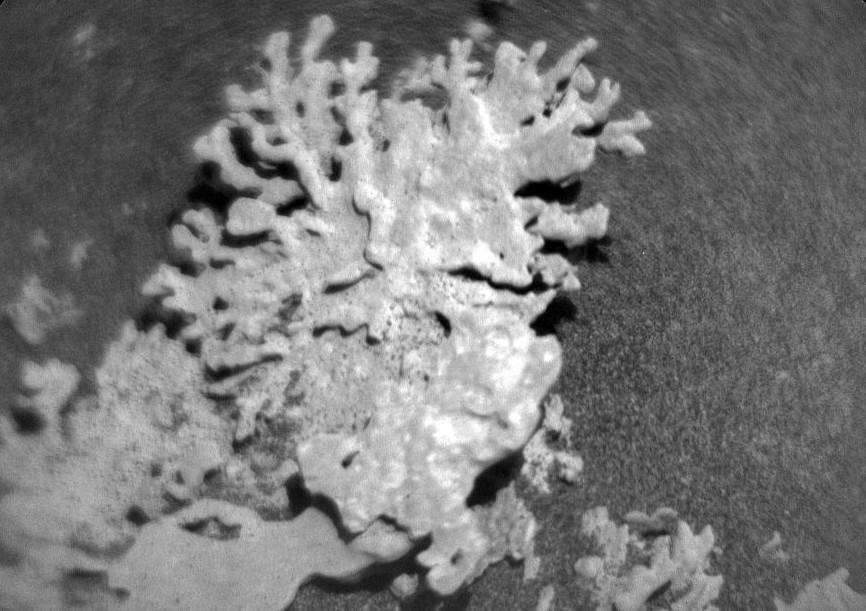
Coral-shaped rock spotted on Mars, NASA shares pic
NASA’s Curiosity Mars rover has made another fascinating discovery on the Martian surface, and this time, it’s a rock that bears an uncanny resemblance to a piece of coral. The rover, which has been exploring Mars since 2012, has sent back black and white images of the rock, which were shared by NASA recently.
The coral-shaped rock was found in the Gale Crater, a large impact basin on Mars that is about 96 miles (154 kilometers) in diameter. The crater is a popular destination for NASA’s Curiosity rover, which has been studying the Martian geology and searching for signs of past or present life on the Red Planet.
According to NASA, the recently discovered coral-like rock is believed to be around a billion years old. The rock is made up of calcium carbonate, which is a common mineral found in coral reefs on Earth. However, the Martian rock lacks the vibrant colors and intricate structures of coral reefs on our planet.
The discovery of the coral-shaped rock is significant because it provides further evidence of the complex geological processes that have shaped Mars over the past few billion years. The rock’s formation is thought to have been influenced by the interaction of water and minerals in the Martian environment, which is a key factor in the formation of sedimentary rocks like the one discovered by Curiosity.
The rock was imaged by Curiosity’s ChemCam instrument, which is a laser-induced breakdown spectroscopy (LIBS) instrument that can analyze the chemical composition of rocks and soil on Mars. The images were taken on August 27, 2020, and were released by NASA on September 2, 2020.
The coral-shaped rock is just the latest in a series of fascinating discoveries made by Curiosity on its journey across the Martian surface. Since its landing in August 2012, the rover has explored over 20 kilometers of Martian terrain, studying the geology, climate, and potential habitability of the planet.
One of the most significant discoveries made by Curiosity so far is the presence of ancient lakes and rivers on Mars. The rover has found evidence of sedimentary rocks that were formed in a lake environment, which suggests that Mars may have once been home to liquid water. This discovery has significant implications for the search for life on Mars, as liquid water is a key ingredient for life as we know it.
In addition to its geological discoveries, Curiosity has also been studying the Martian climate and searching for signs of past or present life on the planet. The rover is equipped with a suite of scientific instruments that allow it to study the Martian atmosphere, geology, and potential biosignatures.
The discovery of the coral-shaped rock is a reminder of the vast and complex geology of Mars, and the many mysteries that still remain to be uncovered on the Red Planet. As Curiosity continues its journey across Mars, it is likely to make many more exciting discoveries that will help scientists to better understand the history and evolution of our neighboring planet.
Source: https://www.jpl.nasa.gov/images/pia26634-curiositys-chemcam-views-a-rock-shaped-like-coral/






